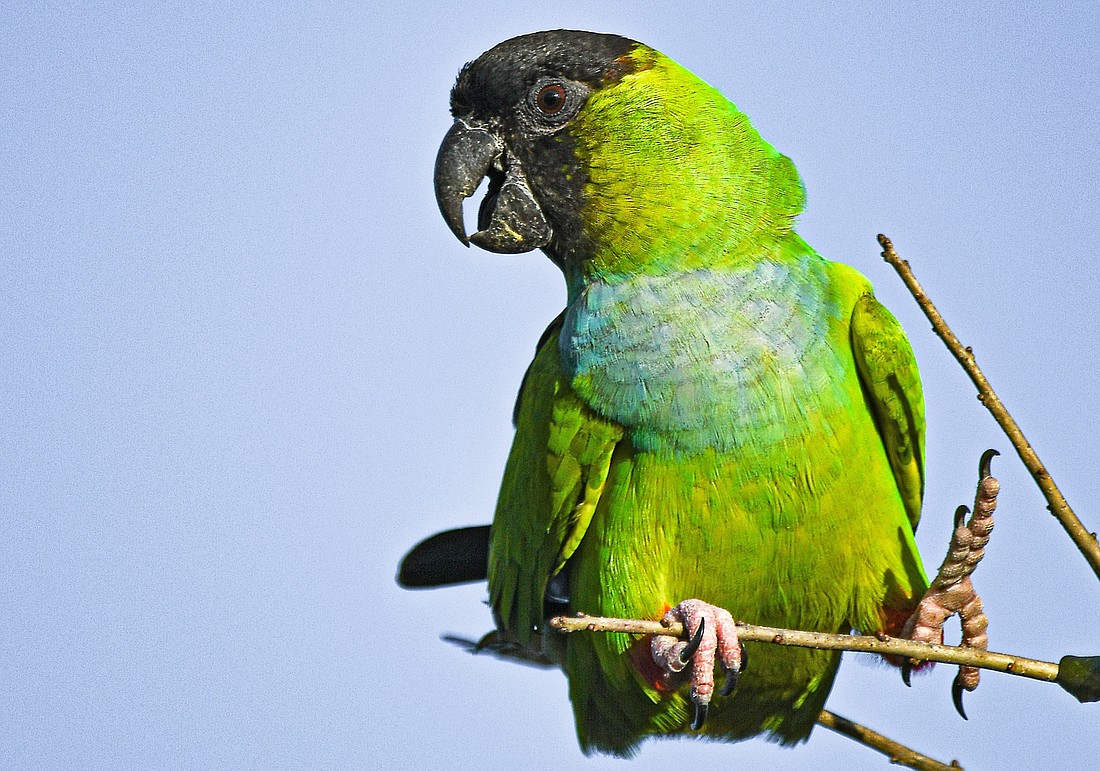- November 19, 2025
-
-
Loading

Smart, social, and boisterous, nanday parakeets can be seen, and heard, throughout Sarasota.
Bright green, with distinctive black heads and bills, these medium-sized parrots are frugivores, which thrive on palm nuts, seeds, flowers and flower buds. And if they look like they belong in a tropical jungle, they do.
Originally from Central South America, nanday parakeets are not a Florida native species. Non-native species usually result from deliberate or accidental human activities.
Because of their colorful plumage, seemingly easy care, and engaging personalities, parrots -- which encompass more than 300 species worldwide including lorikeets, parakeets and true parrots -- became
popular pets in the late 1960s. Some of these intelligent birds escaped. Others were intentionally released by their owners, often because they couldn't care for them or because they made too much noise.
Now abundant in the wild, all parrots in Florida are released or escaped pets, or the descendants of pets that have now established permanent breeding colonies. The only parrot endemic to the eastern United States, the Carolina Parakeet, became extinct in 1918, due to hunting and habitat loss.
A non-native species is considered invasive when it harms local species. Nanday parakeets likely compete with our native song-birds for food. Also, as they are cavity nesters, and tree cavities are a limited resource, they likely displace cavity nesting native species, such as American kestrels, screech owls and woodpeckers.
Non-native parrots are thriving here in part due to widespread use of non-native tropical plants with showy flowers or edible fruit. To support our native birds, we can choose Florida native plants for our public and private gardens. And we can prevent further harm by never releasing pets into the wild.